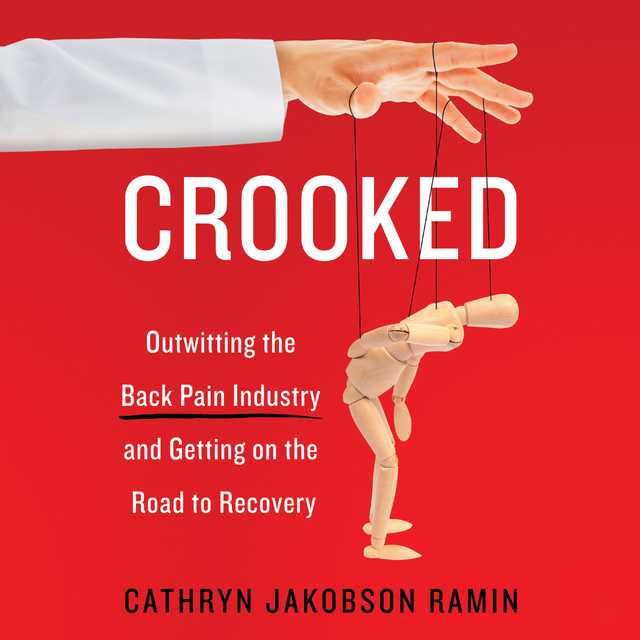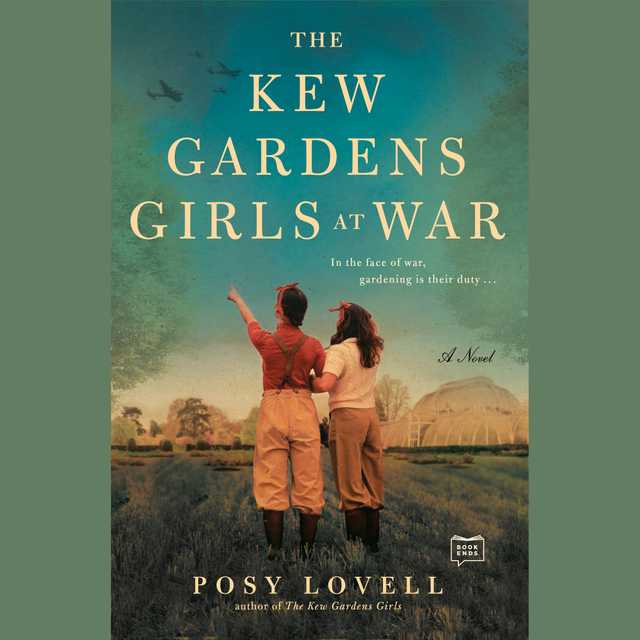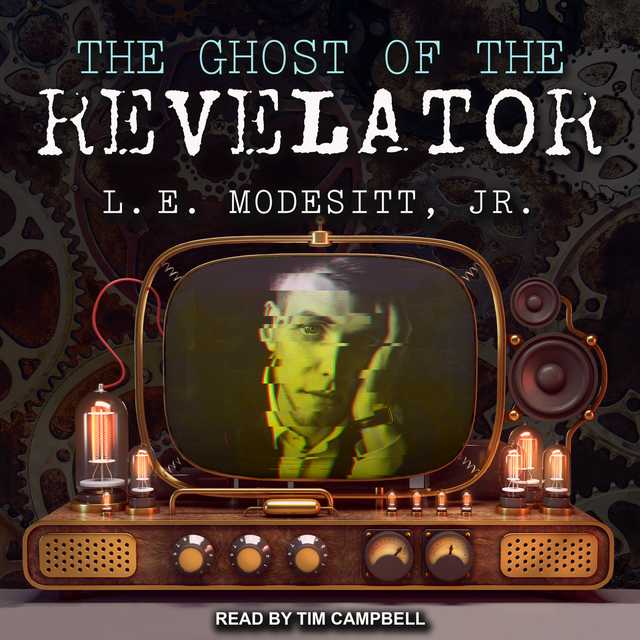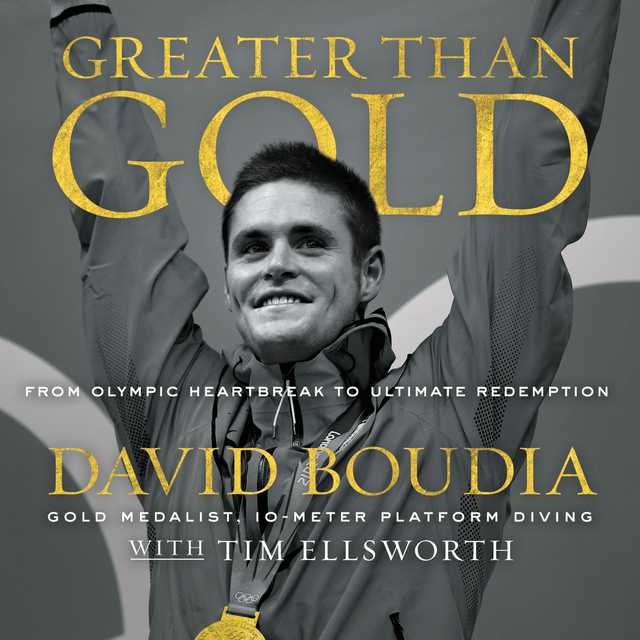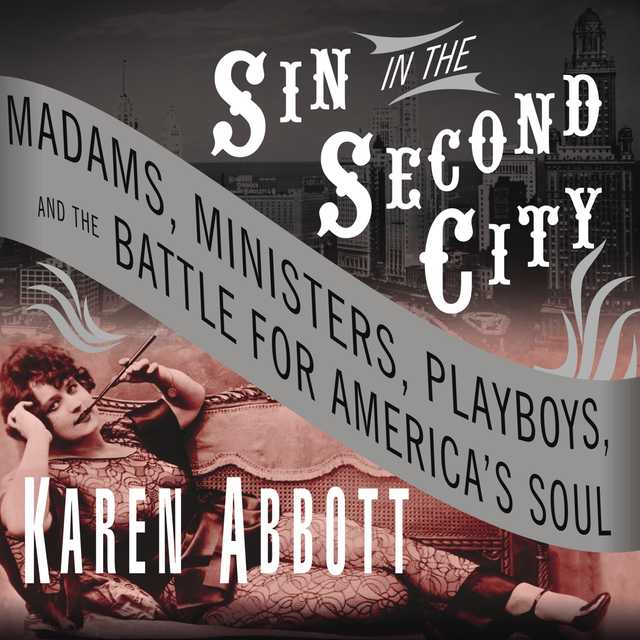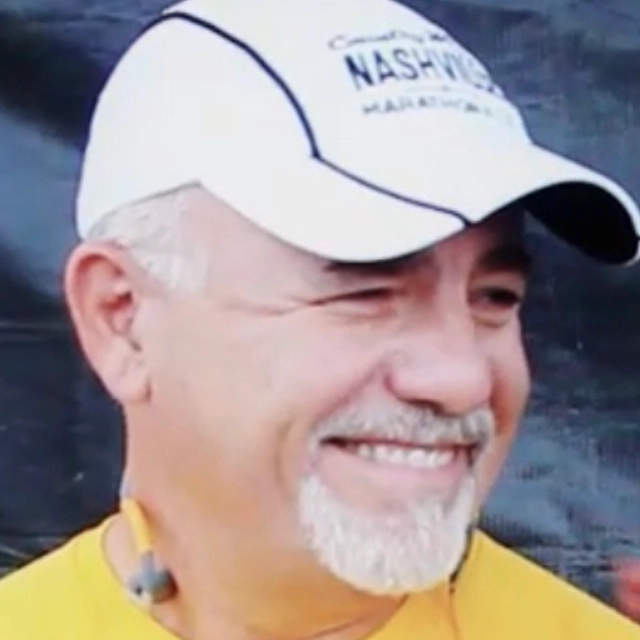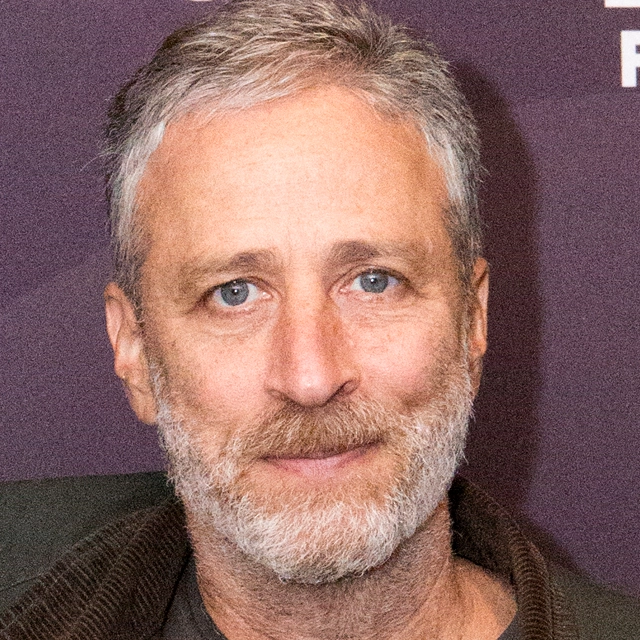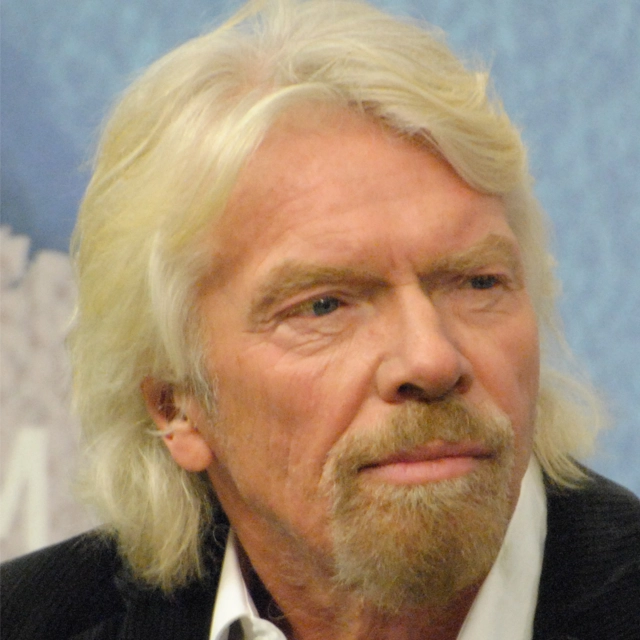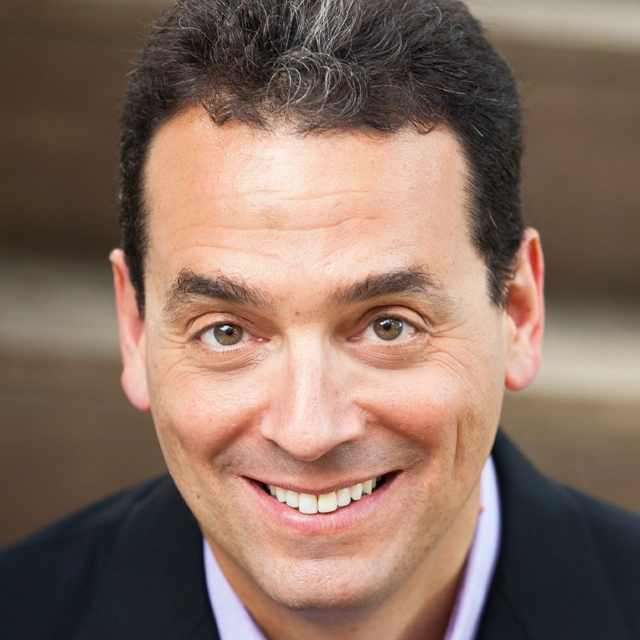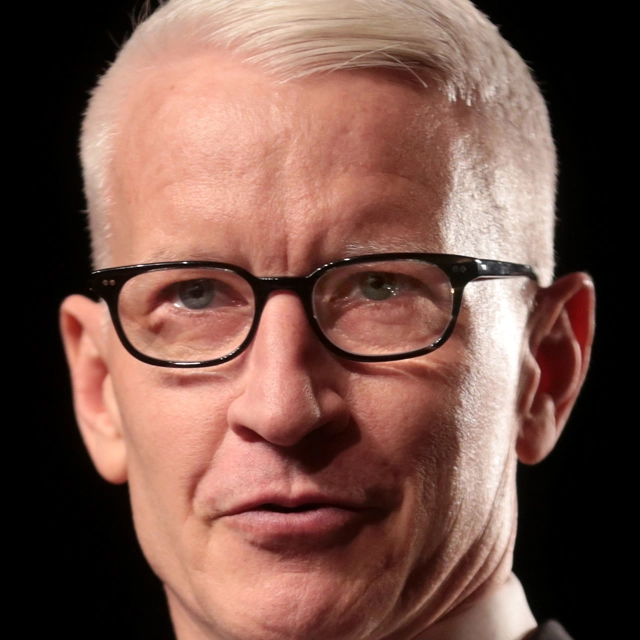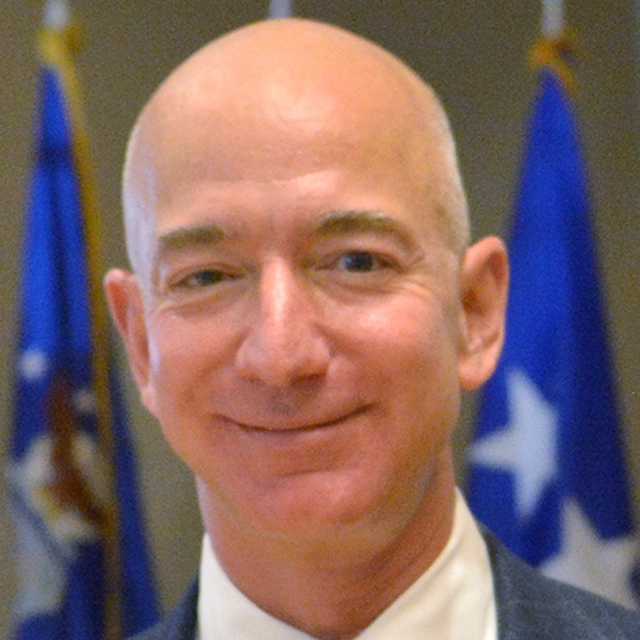Crooked Audiobook Summary
The acclaimed author of Carved in Sand–a veteran investigative journalist who endured persistent back pain for decades–delivers the definitive book on the subject: an essential examination of all facets of the back pain industry, exploring what works, what doesn’t, what may cause harm, and how to get on the road to recovery.
In her effort to manage her chronic back pain, investigative reporter Cathryn Jakobson Ramin spent years and a small fortune on a panoply of treatments. But her discomfort only intensified, leaving her feeling frustrated and perplexed. As she searched for better solutions, she exposed a much bigger problem. Costing roughly $100 billion a year, spine medicine–often ineffective and sometimes harmful –exemplified the worst aspects of the U.S. health care system.
The result of six years of intensive investigation, Crooked offers a startling look at the poorly identified risks of spine medicine, and provides practical advice and solutions. Ramin interviewed scores of spine surgeons, pain management doctors, physical medicine and rehabilitation physicians, exercise physiologists, physical therapists, chiropractors, specialized bodywork practitioners. She met with many patients whose pain and desperation led them to make life-altering decisions, and with others who triumphed over their limitations.
The result is a brilliant and comprehensive book that is not only important but essential to millions of back pain sufferers, and all types of health care professionals. Ramin shatters assumptions about surgery, chiropractic methods, physical therapy, spinal injections and painkillers, and addresses evidence-based rehabilitation options–showing, in detail, how to avoid therapeutic dead ends, while saving money, time, and considerable anguish. With Crooked, she reveals what it takes to outwit the back pain industry and get on the road to recovery.
Other Top Audiobooks
Crooked Audiobook Narrator
Cathryn Jakobson Ramin is the narrator of Crooked audiobook that was written by Cathryn Jakobson Ramin
Investigative journalist Cathryn Jakobson Ramin is the author of Carved in Sand: When Attention Fails and Memory Fades in Midlife, published by HarperCollins in 2007. Her new book about the back pain industry, Crooked, will be published in April 2017. She’s written for many national magazines on topics that include healthcare, neuroscience, business, public policy, travel, art, design and culture. A popular speaker, these days, she’s booking lectures that enlighten patients, health care practitioners, corporations and medical facilities about how to manage back pain. Cathryn is married to Ron Ramin, a music composer. They have two adult sons, Avery and Oliver, and a Jack Russell-Daschundt mix dog named Dasch, after the punctuation mark, which he resembles. She divides her time between Northern California and New York City. Facebook: http://bit.ly/fbcrooked . Twitter: @cjramin
About the Author(s) of Crooked
Cathryn Jakobson Ramin is the author of Crooked
More From the Same
- Author : Cathryn Jakobson Ramin
- Carved in Sand
- Publisher : HarperAudio
- Abraham
- American Gods [TV Tie-In]
- Dead Ringer
- House of Sand and Fog
- Prey
Crooked Full Details
| Narrator | Cathryn Jakobson Ramin |
| Length | 13 hours 59 minutes |
| Author | Cathryn Jakobson Ramin |
| Publisher | HarperAudio |
| Release date | May 09, 2017 |
| ISBN | 9780062674340 |
Additional info
The publisher of the Crooked is HarperAudio. The imprint is HarperAudio. It is supplied by HarperAudio. The ISBN-13 is 9780062674340.
Global Availability
This book is only available in the United States.
Goodreads Reviews
Peggy Fegler
March 04, 2018
6 things I learned from this book1. Two people can have the same MRI. One will have back pain the other won't. 2. Don't have back surgery3. Don't have epidural spinal injections. 4.Don't take opioids.5. Sitting for hour after hour is bad. Get up and move.6. Find a good physical therapist who works with you to have a good workout/ stretch program.
Deyanne
January 12, 2019
This is a difficult book for me to review. I felt like I was reading two different books. The first half debunks the traditional back relief approaches from steroid shots, back surgery, chiropractic help, etc. The author is adamant that back surgery for the most part doesn't work. Also, all of the pain medications are also negative. They are addictive and they don't solve anything. Actually, it was quite discouraging. She did emphasize the extremes and all of the things that can go wrong. However, with this said, I doubt that many people in excruciating pain really question the side affects etc. of how they are advised. The second half is the weak section. What do you do about it? Too many anecdotal stories and too many example of following celebrities, etc. What is the average Jo supposed to do? She advocates for movement, but it is difficult to find the right places to provide a back boot camp. There are so many people suffering with debilitating back issues. Sad. She never addressed acupuncture for example. I felt that the book wasn't complete hence the score. I just noticed that I have reviewed an ebook edition. I read this hard copy.
Athan
October 08, 2017
I was 35 and half in January of 2004, past the age when men get to change the world. My back had never been fantastic. I had rowed crew, was swimming or lifting daily (often both) and regularly playing squash. After an unsuccessful first attempt at entrepreneurship I was getting back into trading bonds for a Wall Street house. This entailed a daily commute by car to and from Canary Wharf. By then I was already visiting my osteopath Kris, mainly to deal with a “psoas’ bursitis,” whatever that means, but the back was not entirely playing ball.I can remember precisely when it all took a turn for the worse: my friend Kaspar was in town from Hong Kong and the only time he had to share was in the gym, so we did the treadmill side-by-side, talking and running for a half hour. Driving home I felt this massive discomfort in my back. When I got home, I found it very hard to climb out of my car, not some low-slung thing, but an entirely mundane VW Golf. But I thought nothing of it. Three days later, I suffered all the way on my flight to Salonika for a good friend’s wedding, attempted my customary party trick of Cossack dancing and then bang! (or, rather, crack!!) The most intense pain ever hit my lower back, like I had not experienced before.“All sharp pain is muscular,” my dad (a pioneering heart surgeon) asserted, adding that God did not give me my back to row crew and play squash. This was a sign to get a normal life --of the kind I will never have again, but little did I know that then! All the way back from Salonica to London (via Athens, which is the wrong way) I stood. I only sat down for takeoff and landing, a figurative ice pick firmly lodged in my lower back. A week later things were a bit better, but not loads. And then I locked myself in the spare bathroom of my grand but shoddily-kept apartment opposite the Brompton Oratory. The door was of the kind that opens inwards, so breaking it took me three hours and entailed hitting it hard off-center, in order to break its frame. By the time I was done, my fists and forearms were purple, my voice was gone from shouting for help and the police were just about arriving to tell me they had had me covered all along. I actually appreciated that enormously. Was fantastic to know. First time in my life I’d had warm feelings for the boys (and girl!) in blue.My back, on the other hand, was now totally gone. Kaput.Twelve years later, boy do I wish somebody had given me a copy of “Crooked” there and then. Needless to say, it had not been written yet. But when I saw it I ordered it immediately.My first reaction when it arrived through the post was “WHAT???”“Crooked: Outwitting the Back Pain Industry and Getting on the Road to Recovery” weighs 600 grams. That’s one-and-a-quarter pounds in imperial. WHAT ON EARTH? From my angle, the author’s credibility was destroyed. I read in the Tube these days (driving to work is a total “no no” for me, obviously). I make a point of always standing, so I can keep my back busy. I cannot afford to hang on to 600 (count’em) grams of book. But the damage was done. I was now in possession of “Crooked,” so I resolved to read it. I was richly rewarded.First of all, I learned tons. 1. I’ve had two MRI’s: one back in the summer of 2004 and one more recently, in 2013, probably the all-time peak of my pain. The results were 100% consistent: the disc between my 4th and 5th lumbar vertebrae is herniated / prolapsed and the bits that stick out press hard on my nerves. Consistent, for sure, but totally irrelevant, it turns out. Allow me to quote from page 46: “in 1990, in a study of sixty-seven patients who did not suffer from back pain, orthopedic surgeon and spine researcher Scott Boden showed that more than 90 percent had degenerated or bulging discs, while a third had herniated discs and a fifth showed evidence of spinal stenosis.”I was beyond shocked to read this. But it’s true. As author Cathryn Jakobson Ramin explains in Chapter 3 (“Hazardous Images”) just because your spine looks bad in a picture, it does not mean you should have debilitating back pain. Ergo, fixing what’s wrong in the picture may not fix your back pain either! I NEVER KNEW THAT. Indeed, when my father took me to a neurosurgeon friend of his, the verdict I was given was “this is a matter of physiology; if we do not intervene, your pain is not going anywhere!” Perhaps and perhaps not, basically.2. Here in the UK, meantime, I followed all the steps my hyper-generous employer was happy to pay for. I started with infinite amounts of non-steroidal anti-inflammatories. The little red pills of Voltarol were rhomboid in shape and I took them by the ton, as prescribed. They actually did not give me any relief, but what the heck, I would not dream of risking the counterfactual. Then, on July 14, we forced our boss Stan to take us to the Zuma private room to celebrate the decimation of his ancestors (Stan is noble) over copious amounts of Chassagne Montrachet and some even more expensive red, also from Burgundy. The morning of the 15th I somehow navigated the Golf to Canary Wharf, where I had a French linker auction to handle, only to wake up at noon, face-down, in a pool of my own drool. That was the last time I tried the Voltarol. And quitting it did not leave me in any less pain. Cathryn Jakobson Ramin claims that Vioxx and its cousins might briefly have given me more relief while they were still legal, and may even have shepherded me through the bond auction my colleagues had to cover, but this is the one bit in the book I’d liked her to have covered a bit more. Still, you get a decent tour of the anti-inflammatories.3. Apart for Voltarol, BUPA sorted me out with twice-weekly manipulation of my spine by a physical therapist. This entailed the two of us wearing the same wide leather belt, me leaning over at various angles and him (an older, unprofessionally effeminate, bald man with semifocals) messing with my lower back, and pressing his finger against different places near my spine while I was leaning, for fifteen to twenty minutes at a time. After some twenty sessions of this charade, he told me that we were done trying this “manipulation” and the next thing he had in store for me was an injection of steroids into a hollow part of my spine. I was given the leaflets, we made the appointment and……well, I did not go. Don’t want to dwell too much on why I didn’t, but the thought of this fellow sticking a needle up my, erm coccyx, did not appeal.Well, who woulda thunk, but Cathryn Jakobson Ramin has him covered too: Chapter 4 is all about jockeys, it’s called “Needle Jockeys” and it explains in gory detail that these injections do absolutely nothing at all in the medium term, let alone the long term. Oh, and if the injection goes wrong, you could be paralyzed for life, or you could die. For all the wrong reasons, it looks like I dodged a bullet there. Just imagine my therapist had been some type of female bombshell…4. So I gave up on handling my back myself and left it to my father and brother. My father is, as mentioned above, one of the world’s pioneers in heart surgery. My brother may never become a household name, but he teaches heart surgery at Harvard, so he also knows a thing or two about cutting people up. Daddy accompanied me to my visit with my future surgeon (a friend and colleague of his), booked my appointment, told me how to prepare, the whole nine yards.A week before my operation, daddy called: “Now listen, Athan, son: as your father I must tell you that you should not be operated on. Ninety times out of a hundred, you’ll get your life back. Nine, you’ll do another five operations and live in and out of hospitals for the rest of your life. And one, they’ll snap the wrong wire. I strongly advise you to get accustomed to the pain.”An hour later, in what was clearly a coordinated effort, the phone rang again. This time it was my brother George: “Ela, Athan. You’re getting operated in a week’s time, right? I’ve called to say good luck, but in reality you just shouldn’t do it. Doctors never have them. I’ve worked at MGH, at Yale New Haven, at Mt. Sinai, at Cornell and at St. Elizabeth’s and I’ve never met a doctor who had one of these. So I asked around a bit. These things are for patients only. Do as you like, but you’re making a mistake. It’s your bad luck. You have a bad back. Don’t make it worse.”So the whole thing had been a setup, basically. They had played me. Maybe the neurosurgeon had been in it too, I’ll never find out. But I cancelled.Cathryn Jakobson Ramin has both my father and my brother covered, though. In chapter 5, “The Gold Standard,” she provides the full detail on the statistical results of lumbar spinal fusion surgery. If only they were as rosy as the stats my father gave me! In practice, the operation simply DOES NOT WORK.The book moves on to discredit three more approaches, on which I do not have any personal angles, but I found her description of the path I nearly took so accurate and so convincing, that Chapter 6 “Google your Spine Surgery” on minimally invasive keyhole spinal surgery and Chapter 7 “Replacement Parts” on vertebral implants are also a total must-read.Chapter 8 on “Opioid Wars” is the best chapter of the book and worth the price of purchase alone. It’s probably the chapter my friend Jonathan Cohn would like you to read first. (Oh, yeah, that’s why I bought the book, btw. I saw Jon’s endorsement and I thought “what the heck, it must be worth reading.”) Until I read this, I always thought the Sacklers were patrons of the arts. I can still hear the tour guides at Harvard telling the impressionable tourists that the tiling of the Sackler Museum picks up the hues of the roof of Memorial Hall. Now I just think of them as the white collar drug dealers that they are. Start with chapter 8!From there onward the book goes all crunchy for my macho taste. But that’s just my taste, and if you want to hear about fifteen different types of “back whisperers” and “posture mavens,” if you think your options are limited to pilates and yoga (Pilates was originally Greek, btw, not German, tsk tsk!) then you’re in for a treat: Cathryn Jakobson Ramin gives you the full Grand Tour of all the exercise regimes ever invented for people to deal with their back. It really is all here and if it’s not here, then it’s on her website, which you must visit.So there you have it: this is not my kind of book at all, but it’s one of the best books I’ve read. If you have a bad back, you can’t afford not to read it.
CapnFantastic
September 20, 2017
I am a physical medicine and rehabilitation chiropractor. I found Crooked to be factual, entertaining, enlightening and pretty thorough. Her conclusion- that most back pain sufferers are mis-treated due to ignorance is spot on. She rightly includes all professions that may be involved in caring for this patient population and points to the minority successful practitioners and programs for guidance. Lay readers may be left feeling hopeless due to physical, financial or other inability to enjoy cutting edge, evidence-based approaches to treating low back pain, as these resources are few and far between. What IS clear is that these same frustrated patients best be wary of surgeons, physical therapists, chiropractors and others who have gotten lax and not kept up with the evidence and/or have convinced themselves that they are providing more benefit and less harm than they actually do.My advice if you are not so lucky as to have access to one of the experts (there are many PT's, chiropractors and others who are qualified to help you. But it can be difficult to find them in the mass of zombie practitioners) is to read, re-read and follow Dr. Stuart McGill's (one of the author's "spine whisperers") book BACK MECHANIC. Dr. McGill's work will fill in the gaps found in Crooked.
Elizabeth
February 18, 2018
First half of the book is one depressing chapter after another about medical interventions (procedures & drugs) that were hailed over the past 10 years as miracle cures for back pain, and all failed -- most noticeably the opioid epidemic. Last half, or third, is about the author's exploration of mostly non-intervention practices to assist with back pain, everything from intensive 3-week programs to rolfing, Tai Chi, etc. Lessons learned are... for general back pain and degeneration, don't do anything invasive, don't get hooked on painkillers (duh). Try preventative things, like the methods she mentions towards the end of the book, e.g. Feldrinkais Method. Realize that if you have severe but non-specific back pain you main need a more substantial treatment (like a sort of physical therapy boot camp) that teaches your nerves and brain how to recognize sensations from the spine as NOT being pain, meaning the sensations might not feel good but they don't mean that there is something wrong. Keep moving! Rest is not the best way to improve back pain. And finally, you can't "bank" good exercises for your back. That is, if you have chronic pain, you can't do all this non-invasive work, have the pain subside, and then expect it to never come back. Maintenance is lifelong. The author equates it with brushing your teeth. She highly recommends Stuart McGill's "Big Three" exercises to strengthen endurance of the spine (a modified crunch, a side plank, and a bird-dog). I'm doing bird-dog right now as I type this. Not really...
Alison
August 12, 2018
I was close to giving this a 3 star as there are some things I have issues with in this book. However, she provides such a wealth of important information on this subject that is SO important to any of us with back issues that I am willing to give it 4 stars! I had a single level cervical fusion 2 years ago that just made things worse. Reading the first half of this book just made me so angry that doctors are prescribing interventions that have low effectiveness rate. One issue I had with this book is that she only talks about the lumbar spine issues and interventions. It made me wonder if the interventions she talks about are as ineffective for cervical issues.(I am sure they are) And on the other hand, if the ‘good’ interventions and exercise programs are good for cervical issues as well. One thing that is discouraging is that many of us can’t afford all the things she talks about in the second half and insurance won’t cover them. Very frustrating. Now I am off to research some lower cost options to implement her suggestions. One side note is that I am surprised that she didn’t investigate or mention acupuncture as it has also been effective in back pain relief. Excellent book in many ways but a bit meandering at times, just like this review!
Dennis
August 01, 2017
With a spine that's been plaguing me since I was eighteen--let's see, that's fifty-two years now--and nurturing a rock-solid refusal to allow anyone holding a sharp implement to get within a mile of my spinal cord, I decided to take a look at what Ms. Ramin might suggest. There's hope to be found in this book and some of her advice seems to have helped me in the pain vs. mobility department. What's demoralizing to me, though, is her confirmation of something I've suspected since medicine first became a corporate thing with hospitals being bought up by conglomerates; there's a bottom line to this stuff, and you and I are considered a bumper crop of financial opportunity. So the doctor who, twenty-five years ago, said I definitely needed to go under the knife wasn't necessarily motivated by a Hippocratic need to fix my problem. His purpose may well have been to make a down payment on a Bentley. What I came away with was confirmation that I was probably right in telling that doctor where to put his scalpel, but also that if things ever got bad to the point of my back being in constant pain and having feet I could see but couldn't feel, there would be a good chance I'd end up in a wheelchair if I gave in to the pressure and allowed a surgeon to "fix" me. But forget my woes. What Ms. Ramin presents is documentation of one huge reason why your insurance costs have gone up, and will probably continue to do so as doctors beat the drum for performing unnecessary procedures, and raping insurance companies in the process. I took a star away only in response to bad news and clinical language that tends to inspire sleep--but there was no way the author could help that aspect of things. It's a clinical subject, so you might consider that I'm being petty with that star. Ms. Ramin worked like a demon on this thing. It deserves better than critiques from me. Read the book.
Amy
August 13, 2017
This is not the kind of book you typically find on my nightstand, but...spoiler alert...I have back pain. I read an interview with the author and bought it immediately. Let me first say that this book is extremely well-written--it's like one of those great New Yorker articles you find yourself reading aloud to anyone who will listen. If Atul Guwande and Mary Roach collaborated on a book about back pain, this would be it.The author's an investigative reporter (with, you guessed it, back pain) who spends the first half of the book exploring the history & current reality of back pain treatment, and the many ways the medical system has failed to address this incredibly common condition. There's greed, corruption, and malpractice, as you might expect.In the second half, she takes us on a firsthand journey of the treatments that actually do work, as demonstrated through rigorous studies and plenty of interviews with people who've been successfully treated.If you or anyone you know has back pain, this is the book! Seriously--check it out. (Oh, and in case you're wondering--you probably aren't, but I'll tell you anyway--after I read this book, I changed a bunch of things about how I deal with my own back, and it's all WORKING!)
Howard
March 15, 2017
Cathryn,Thank you for the opportunity to read your book, “Crooked, etc etc—title”I loved your book; it is wonderful, thoroughly and brilliantly researched; a compelling and essential work. And, it is so easy---a beautiful read. You have really accomplished something. Congratulations.Wow. I believe you have a winner, here.I can't wait for the book's publication to buy a copy for my daughter Jessica, the Pilates Master who does experience back pain on occasion.Howard Schatz, MD
Heather
July 10, 2019
Ramin takes a critical look at chiropractors, physical therapists who don't actually teach people any exercises, doctors, and spinal surgeons, and extolls the virtues of exercise rehabilitation specialists, posture therapists, etc.I'm so incredibly biased on this subject that I'm going to review this book from the perspective of my own experience, not to analyze the author's organization and research.Reading this book was an affirmation to me as I found it to be largely spot-on when compared to my own healing process.I herniated my L4/L5 disc in early 2017. It was the most excruciating pain I'd ever felt, running from my back all the way down to my left foot. I could barely walk for two months after it happened, and at first I even had trouble sleeping at all since the touch of the softest blanket felt like it was burning me.My chiropractor at the time got me in for an MRI and declared that I needed surgery. Luckily, the neurosurgeon he wanted to refer me to was scheduled two months out, so I couldn't see him right away. While I waited, I looked up everything I could get my hands on about herniated discs, and, crazy with pain, became increasingly convinced that my life as I knew it was over and I was going to be like this until I died.However, my chiro referred me to chiro #2, who had a decompression table that might serve as a last-ditch effort to avoid surgery. Chiro 2 put me on this table that played me like an accordion and he encouraged me to keep moving, gently, and as much as possible.At the time, I thought the decompression treatments saved me, but now I think it was the encouragement to keep moving, plus a woman I knew who helped me focus on a belief that I would get through this.Using hiking poles, I walked as much as possible and I went swimming at least once a week even though it was painful. Gradually, I started to get better, to the point that by the time I met with the neurosurgeon, he said that I didn't need surgery. That summer, I challenged myself with an 8-mile hike on Mount St. Helens.Now, two years out from the injury, I still have to take as many walks as I can, plus swimming and Pilates, but I have zero pain or numbness from my injury. I also haven't felt the need to see a chiropractor since I was released from Chiro 2's treatment.I never got the sense that either of my chiropractors were just out to take my money--they are both really great guys. However, I'm now pretty convinced that chiropractic care just isn't necessary for people who are able to stay fit and find other ways to release tension.I'm also very grateful that the neurosurgeon I saw was one who was very conservative with treatments and was not at all eager to cut me open willy-nilly. The stories I read online of how a failed microdiscectomy led to a spinal fusion which led to another spinal fusion terrified me. Never. Never ever doing it. I had to wait a long time to be out of pain, but it was worth it not to be cut open, and I'm thankful to this author for looking at the lack of effectiveness of spinal surgery.I found the musings about exercise to jive with my own experience, although I don't think it's necessary to go out and find the best of the best like Ramin did. Her advice about which credentials to look for is probably good, though.Ramin admires John Sarno's work. Sarno's books are about how all back pain is emotional, not physical. I don't believe that's true for everyone, so I think Sarno sounds a bit quacky. However, I could see how emotions could contribute to back pain by creating muscle tension, and I could believe that some people might be able to cure their pain by dealing with their emotional state.I also don't think rolfing should be looked upon as a universal good for back pain. When I was looking for info about the psoas muscle, because I believed that a psoas strain had caused my herniated disc, I found info about deep tissue massage to release the psoas. However, the psoas is behind a lot of important stuff and near the abdominal aorta, so if you get someone who's not experienced at finding it, they could really damage you if they press too hard on the wrong thing.Ramin touts posture awareness, which I did find to be a good tool in my back-healing toolbox. The book 8 Steps to a Pain-Free Back: Natural Posture Solutions for Pain in the Back, Neck, Shoulder, Hip, Knee, and Foot was very helpful. I spent a lot of time with it re-learning how to sit, stand, walk, and sleep so that my whole body would be in better alignment. I don't think Ramin mentions the author of this book in hers, but I noticed that the book was in her bibliography.Overall, this book made me so thankful that I had my back injury in 2017 and not before. The book came out that same year, and it sounds like best practices for conservative treatment of back pain had already begun changing by then. I am so happy that they did.I do notice that I remain reluctant, psychologically, to do anything too strenuous. I've found that lifting too much does set off some numbness in my toe or my foot, so I think I'll keep avoiding that. Ramin's book made me think that maybe it's okay to push myself a little bit in other areas, though, like maybe some jogging instead of walking, going to a more difficult Pilates class, or maybe starting some weight training.I spent most of my life as a sedentary nerd, but Ramin's got me convinced that maybe a life-sentence to exercising isn't actually so bad.
Leib
April 11, 2021
5.0 out of 5 stars Very useful in charting a path. Explores a whole range of treatmentsReviewed in the United States on January 8, 2018Verified PurchaseWe found this book after some searching because my wife has non specific back pain. With insurance deductibles as high as what they are these days (thanks to the Patient Protection and Affordable Care Act), I am trying to map a plan for her treatment as judiciously as possible because it only takes a very few missteps to waste a lot of money.Boy am I glad that I found this book!There is so much information on this topic, it's amazing that the author got in even as much as she did.The author breaks the book into two parts: 1. Problems. 2. Solutions.That is not quite the way that the book comes across to me. It's more like:1. Scope of the problem2. What *definitely does not work* (i.e., Chiropractic-- If the initial practitioners of chiropractic knew how much fodder they would have provided for later people to blowtorch them with, they would never have started to ply their trade.)3. What has a shakier track record (Surgery of various types/ Injections, along with detailing the techniques of each type of surgery)4. Relationship of mental states to back pain. (It's not psychosomatic, but more of it is in a person's head than they might imagine.)5. What has the best track record (Different types of exercise and methods to improve movement).There are also quite a few questions around the edges that have tangential relationships.'1. What are the misaligned incentives such that surgeons want to do a whole bunch of extra surgeries, even if they have only marginal benefit. (To a hammer, everything looks like a nail.) Could those incentives be made better?2. What happens when the state is the single provider of medicine? There are a lot more treatments than they can test and sort through and in their question to do less work, they may exclude some very effective treatments.3. What happens when insurance companies will not pay for something that is a little bit too much to pay for out of pocket but less than what it would cost to take a surgery?The book itself appears to be four things at once:1. Medical history2. Investigative journalism (the author herself goes through many treatments as well as calls to attention exposes of corrupt doctors)3. A policy book (that asks questions about outcomes under universal health care as well as insurance based systems)4. Information on success rates of different types of surgery/ procedures (and there are many of them)I don't know that this is an exhaustive literature survey-- but there are some things that give the reader directions for further study. So, for example, we might want to get a meta analysis of one particular type of surgery to get an idea if *many* surgeries say that it is no more effective than placebo or just the study that Ramin uotes.The book is well organized (with a good index) and well sourced.Verdict: Worth the price and worth the time. Even if you have to read the book a second time or go to the medical library to source some of the citations in this book or do secondary research.Recommended.
Max
May 29, 2017
I think this is a terrific read - very detailed and comprehensive and providing an unmatched background and context for the back pain industry. The author Ms. Ramin is to be commended and tremendous appreciation to her for dedicating 6-7 years of her life sharing this very important story. It's a sad story and commentary on our health care system but does offer a modicum of hope in the final 3-4 chapters. My two criticisms of the book are the following:(1) it misses the key point of the mind body connection. The whole point of Dr. John Sarno's approach (see for example https://www.youtube.com/watch?v=2B2IE... and http://www.pgbovine.net/back-pain-gue...) is that your mind and stress is the ROOT cause in 95% of lower back pain cases. The author however treats this revolutionary concept on a similar footing with other approaches that have apparent efficacy: Feldenkrais, yoga, tai chi, etc. So there are a "trail of crumbs" so to speak but the larger point is unsaid and the reader is left to connect the dots. (2) Because it misses this larger point, the take-away from the book seems to be that if you have chronic back pain, you need to treat it, strengthen it, exercise it, overcome your bad posture, etc. This is not a particularly hopeful or helpful message because (a) many people may not have the time or resources to consistently get or practice the so-called "right" kinds of treatment; and (b) if it is indeed true that the root cause is mind-related (stress, repressed emotions, cultural mindsets, etc.), this message dilutes and distracts many readers from what is in fact the root cause and what they should be focusing on.
Frequently asked questions
Listening to audiobooks not only easy, it is also very convenient. You can listen to audiobooks on almost every device. From your laptop to your smart phone or even a smart speaker like Apple HomePod or even Alexa. Here’s how you can get started listening to audiobooks.
- 1. Download your favorite audiobook app such as Speechify.
- 2. Sign up for an account.
- 3. Browse the library for the best audiobooks and select the first one for free
- 4. Download the audiobook file to your device
- 5. Open the Speechify audiobook app and select the audiobook you want to listen to.
- 6. Adjust the playback speed and other settings to your preference.
- 7. Press play and enjoy!
While you can listen to the bestsellers on almost any device, and preferences may vary, generally smart phones are offer the most convenience factor. You could be working out, grocery shopping, or even watching your dog in the dog park on a Saturday morning.
However, most audiobook apps work across multiple devices so you can pick up that riveting new Stephen King book you started at the dog park, back on your laptop when you get back home.
Speechify is one of the best apps for audiobooks. The pricing structure is the most competitive in the market and the app is easy to use. It features the best sellers and award winning authors. Listen to your favorite books or discover new ones and listen to real voice actors read to you. Getting started is easy, the first book is free.
Research showcasing the brain health benefits of reading on a regular basis is wide-ranging and undeniable. However, research comparing the benefits of reading vs listening is much more sparse. According to professor of psychology and author Dr. Kristen Willeumier, though, there is good reason to believe that the reading experience provided by audiobooks offers many of the same brain benefits as reading a physical book.
Audiobooks are recordings of books that are read aloud by a professional voice actor. The recordings are typically available for purchase and download in digital formats such as MP3, WMA, or AAC. They can also be streamed from online services like Speechify, Audible, AppleBooks, or Spotify.
You simply download the app onto your smart phone, create your account, and in Speechify, you can choose your first book, from our vast library of best-sellers and classics, to read for free.
Audiobooks, like real books can add up over time. Here’s where you can listen to audiobooks for free. Speechify let’s you read your first best seller for free. Apart from that, we have a vast selection of free audiobooks that you can enjoy. Get the same rich experience no matter if the book was free or not.
It depends. Yes, there are free audiobooks and paid audiobooks. Speechify offers a blend of both!
It varies. The easiest way depends on a few things. The app and service you use, which device, and platform. Speechify is the easiest way to listen to audiobooks. Downloading the app is quick. It is not a large app and does not eat up space on your iPhone or Android device.
Listening to audiobooks on your smart phone, with Speechify, is the easiest way to listen to audiobooks.

